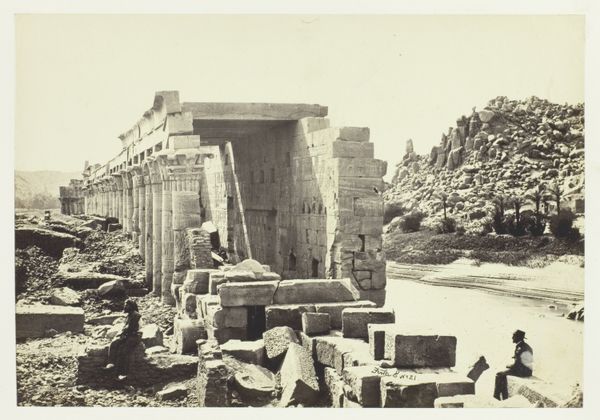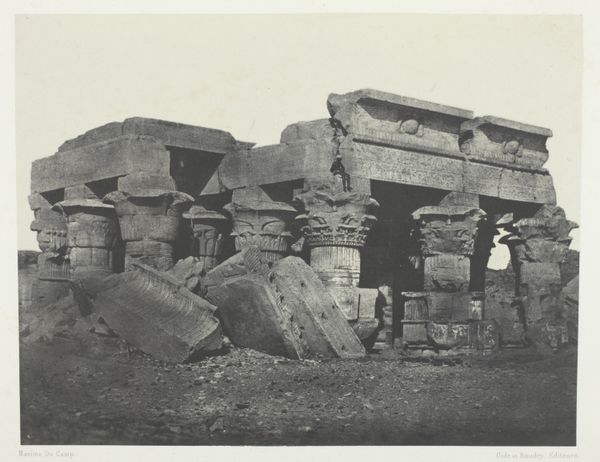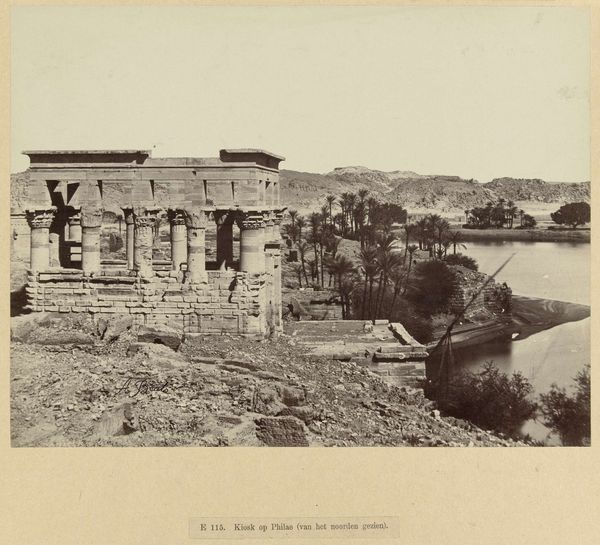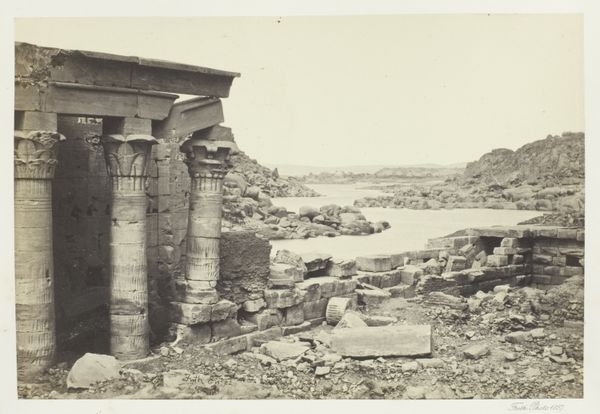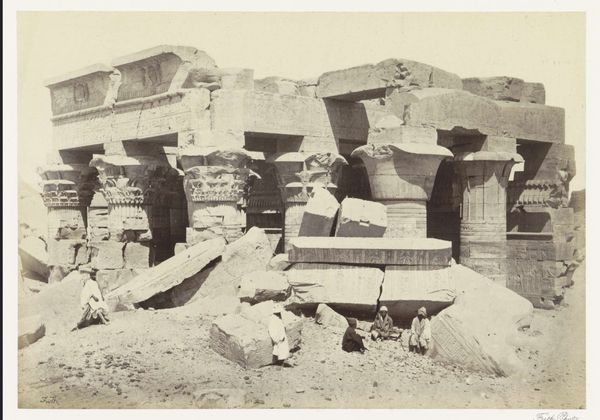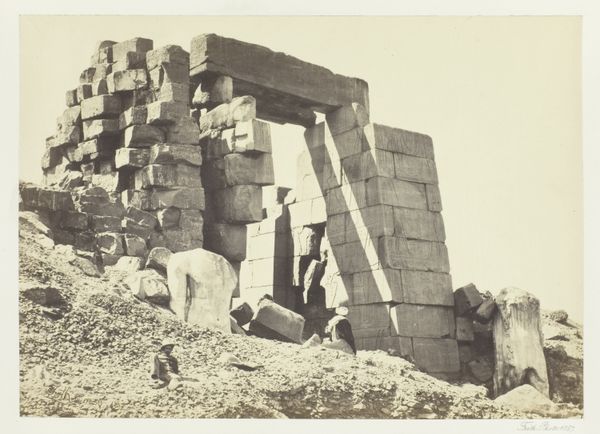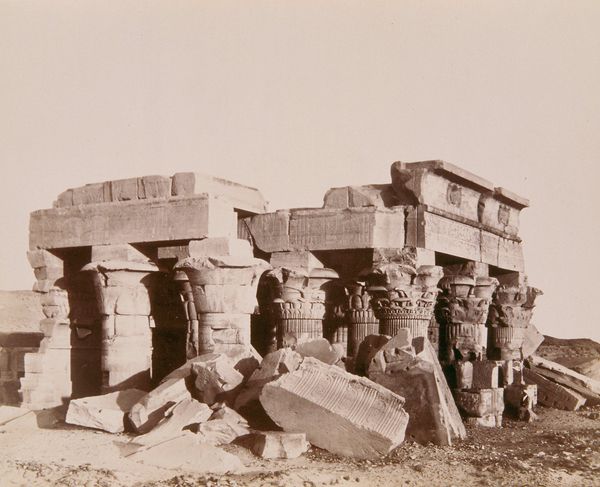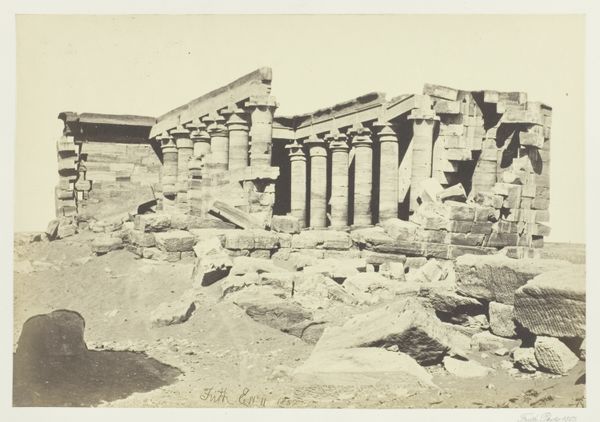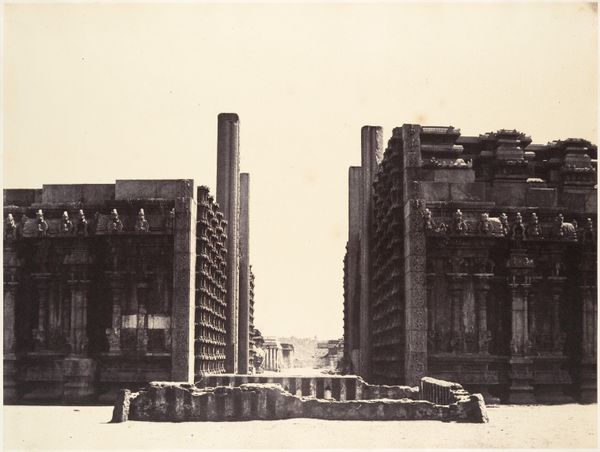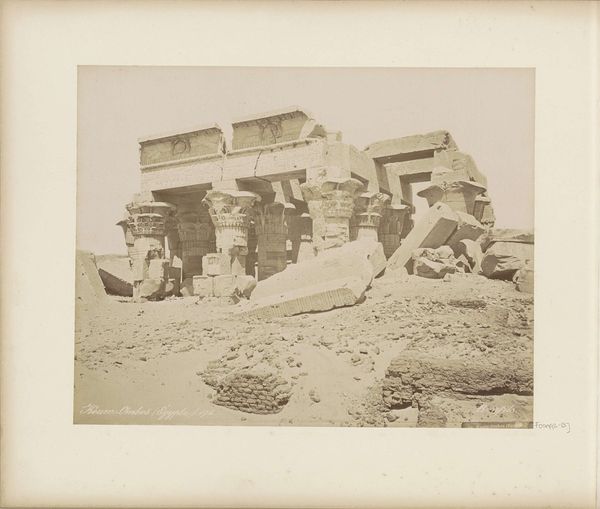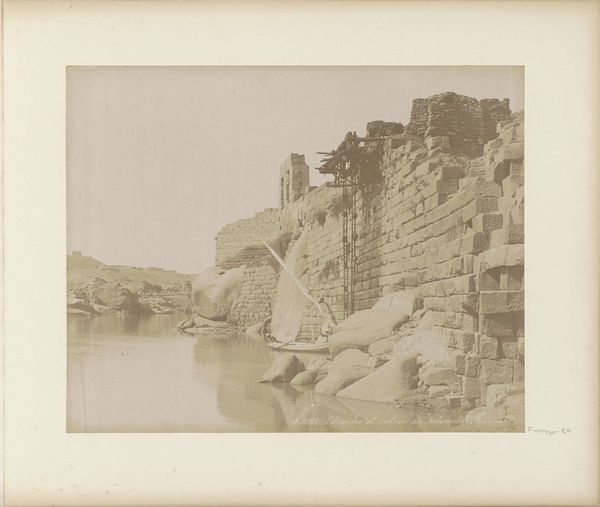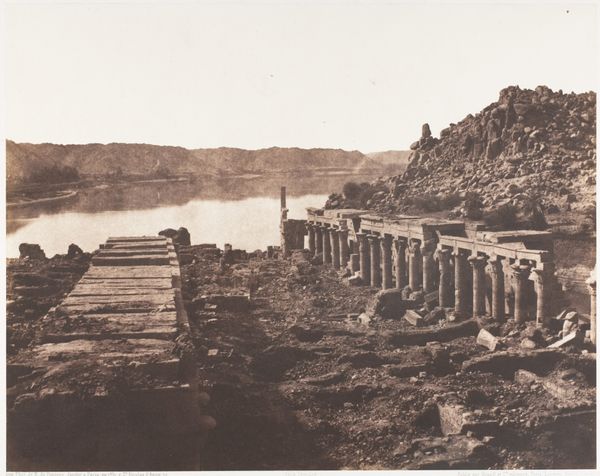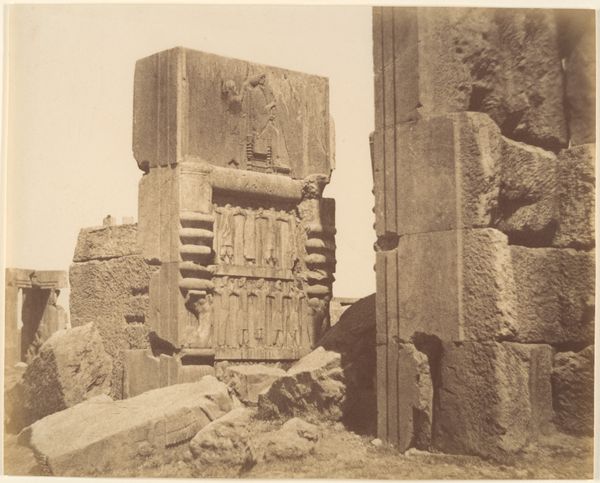
print, daguerreotype, photography
# print
#
landscape
#
daguerreotype
#
ancient-egyptian-art
#
photography
#
historical photography
#
ancient-mediterranean
Dimensions: height 161 mm, width 219 mm
Copyright: Rijks Museum: Open Domain
Editor: So, this is Francis Frith's "Colonnade on the Island of Philae in the Nile," taken before 1859. The sepia tones and the crumbling architecture give it such a poignant, almost romantic feel. It's striking to see this ancient monument captured through such an early photographic process. What's your take on this photograph? Curator: Well, it's a photograph of stone, yes, but more importantly, it reveals the exploitation inherent in 19th-century archaeological endeavors. Consider the immense labor required to quarry, transport, and erect these massive structures. The photographic process itself becomes another layer of extraction and commodification. How does capturing this image, this ruin, contribute to its own historical and economic narrative? Editor: That’s a perspective I hadn’t considered. So, you're saying the photograph is not just a record but a participant in the ongoing story of this site's material use and representation? Curator: Precisely! Look at the textures – the smooth, worn columns versus the jagged, broken blocks. What kind of labor shaped each element, and how does that labor connect to power? Think about the market for such images at the time. These pictures weren't cheap or accessible; they fueled a specific narrative consumed by a wealthy, European audience, re-enforcing a colonial gaze. Editor: So the daguerreotype wasn’t simply about capturing beauty, but about ownership and consumption as well. Does knowing that change the way we look at these ruins now? Curator: Absolutely. It pushes us to consider the full lifecycle, from creation to excavation, imaging and ultimately its display here in a museum. We are implicated in the material network. Editor: This makes me think differently about the relationship between art, labor, and the way we value historical objects. Curator: Indeed, seeing art through a material lens offers a deeper understanding of the complex social forces at play.
Comments
No comments
Be the first to comment and join the conversation on the ultimate creative platform.
